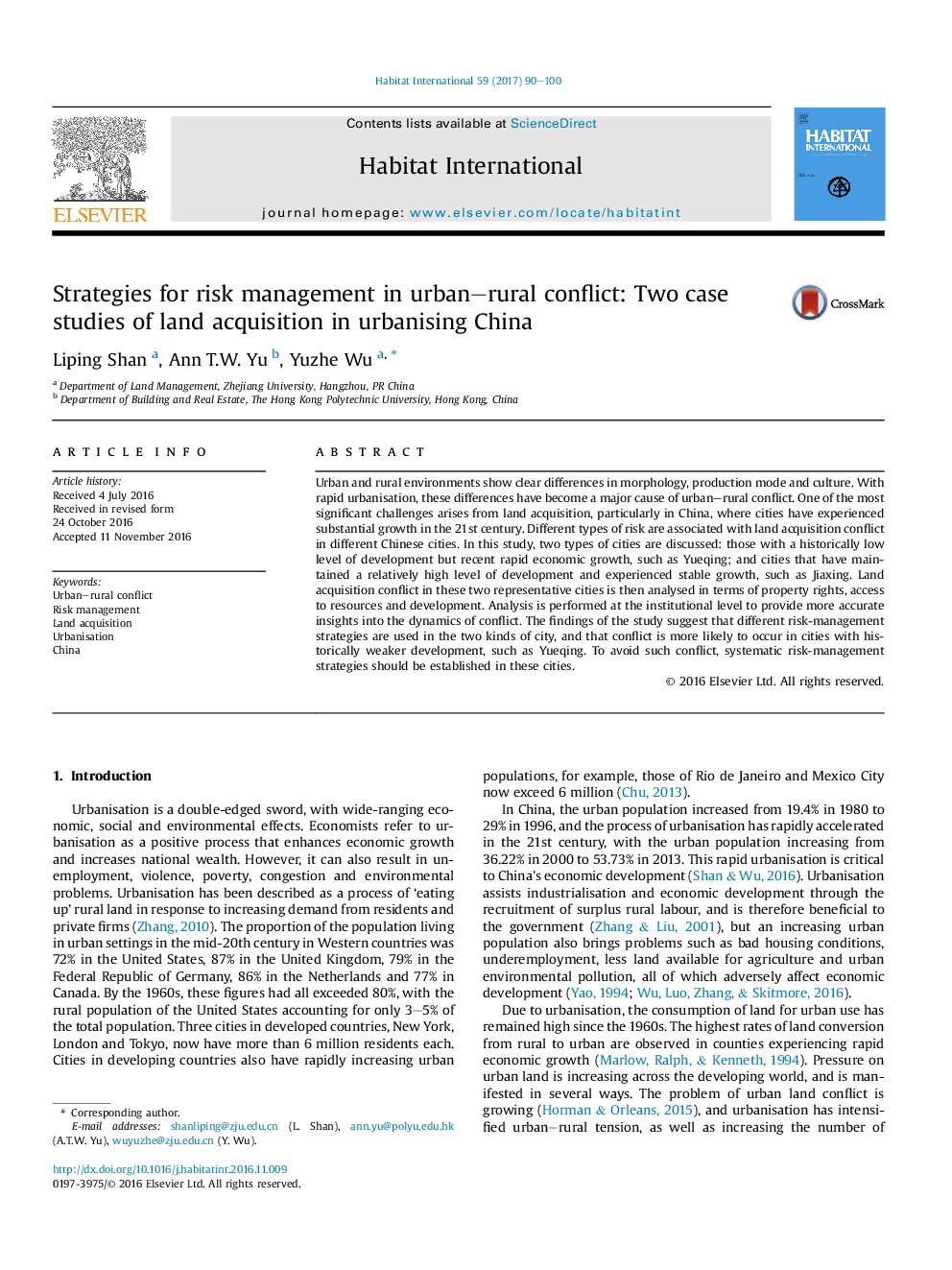| Article ID | Journal | Published Year | Pages | File Type |
|---|---|---|---|---|
| 5114702 | Habitat International | 2017 | 11 Pages |
Abstract
Urban and rural environments show clear differences in morphology, production mode and culture. With rapid urbanisation, these differences have become a major cause of urban-rural conflict. One of the most significant challenges arises from land acquisition, particularly in China, where cities have experienced substantial growth in the 21st century. Different types of risk are associated with land acquisition conflict in different Chinese cities. In this study, two types of cities are discussed: those with a historically low level of development but recent rapid economic growth, such as Yueqing; and cities that have maintained a relatively high level of development and experienced stable growth, such as Jiaxing. Land acquisition conflict in these two representative cities is then analysed in terms of property rights, access to resources and development. Analysis is performed at the institutional level to provide more accurate insights into the dynamics of conflict. The findings of the study suggest that different risk-management strategies are used in the two kinds of city, and that conflict is more likely to occur in cities with historically weaker development, such as Yueqing. To avoid such conflict, systematic risk-management strategies should be established in these cities.
Related Topics
Social Sciences and Humanities
Social Sciences
Development
Authors
Liping Shan, Ann T.W. Yu, Yuzhe Wu,
